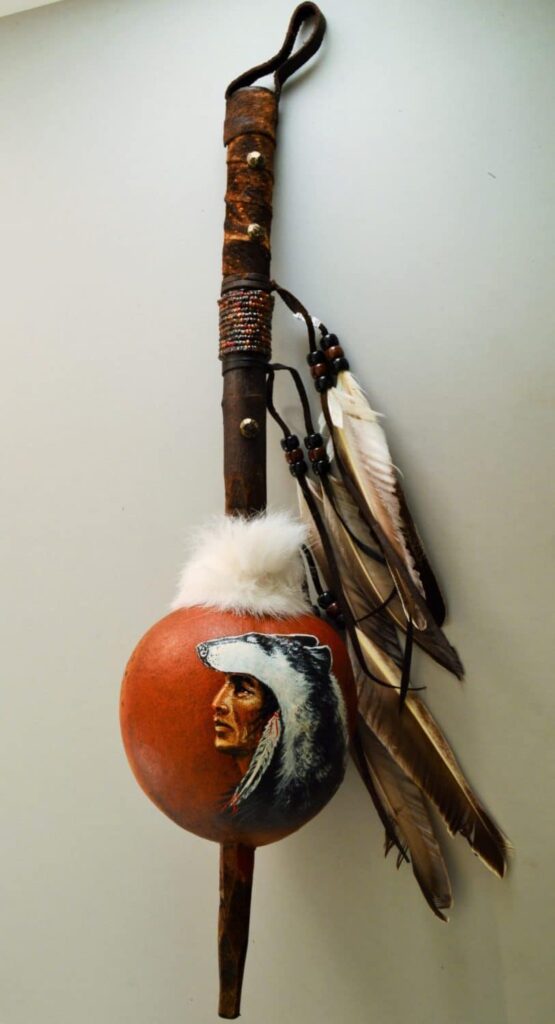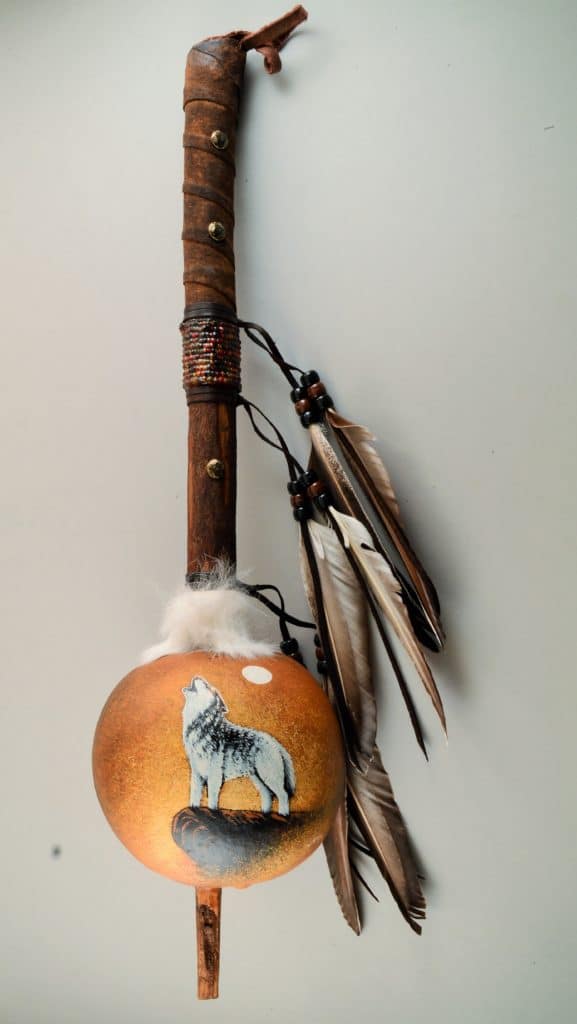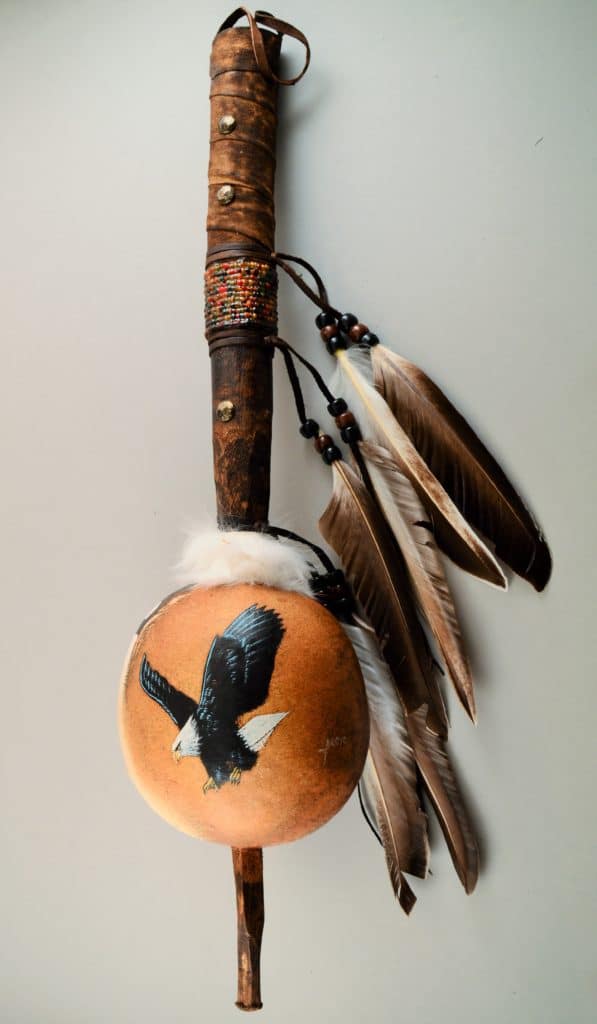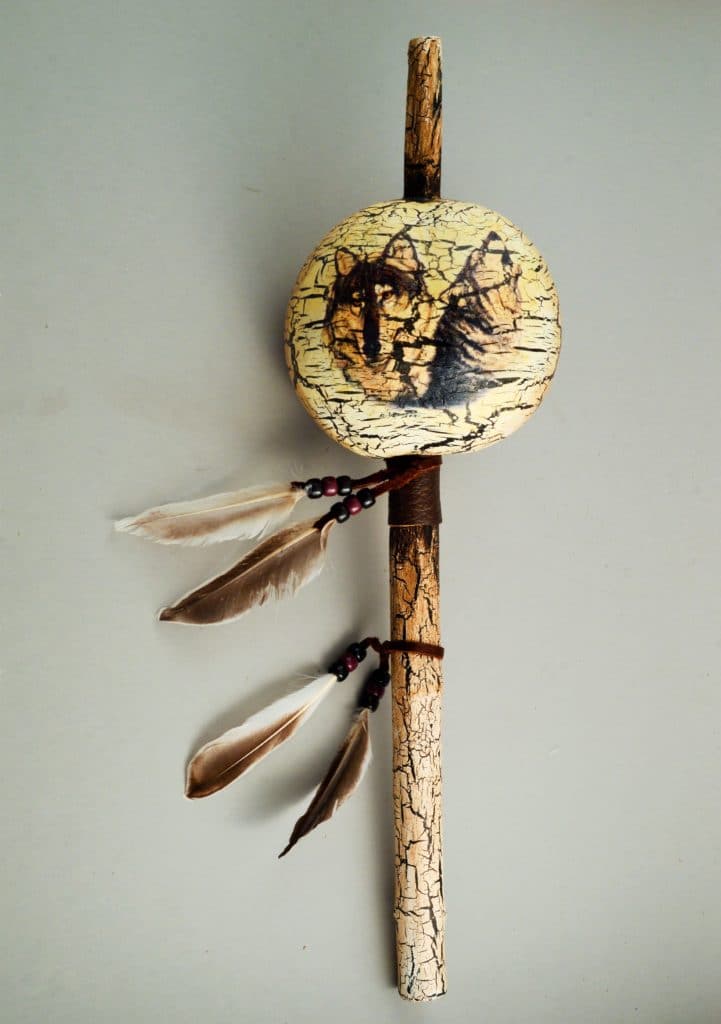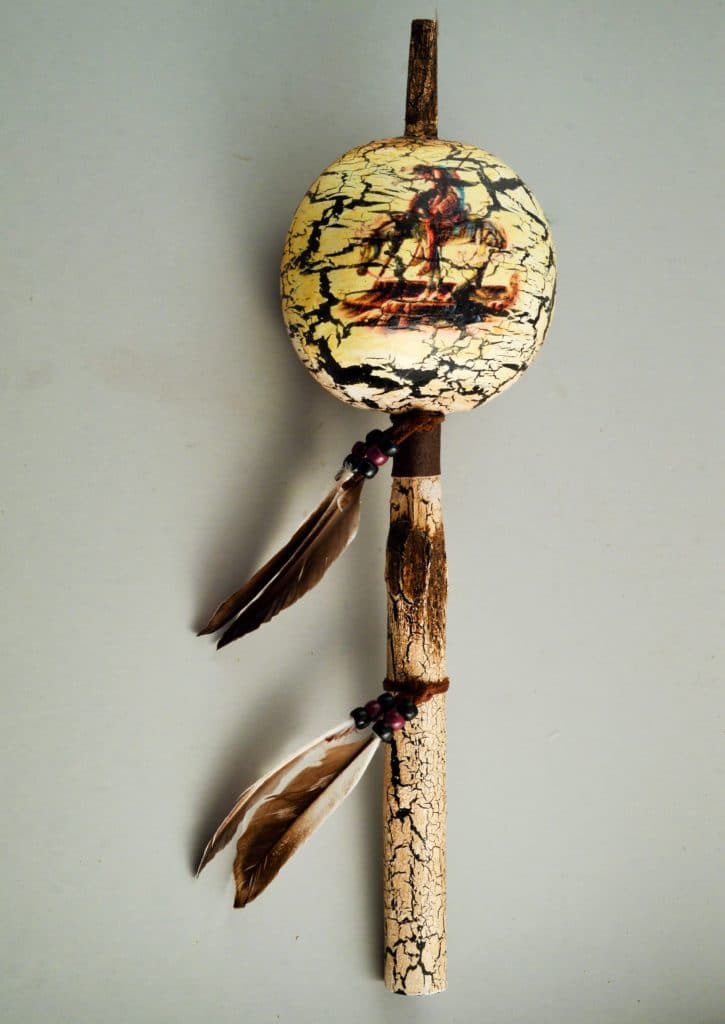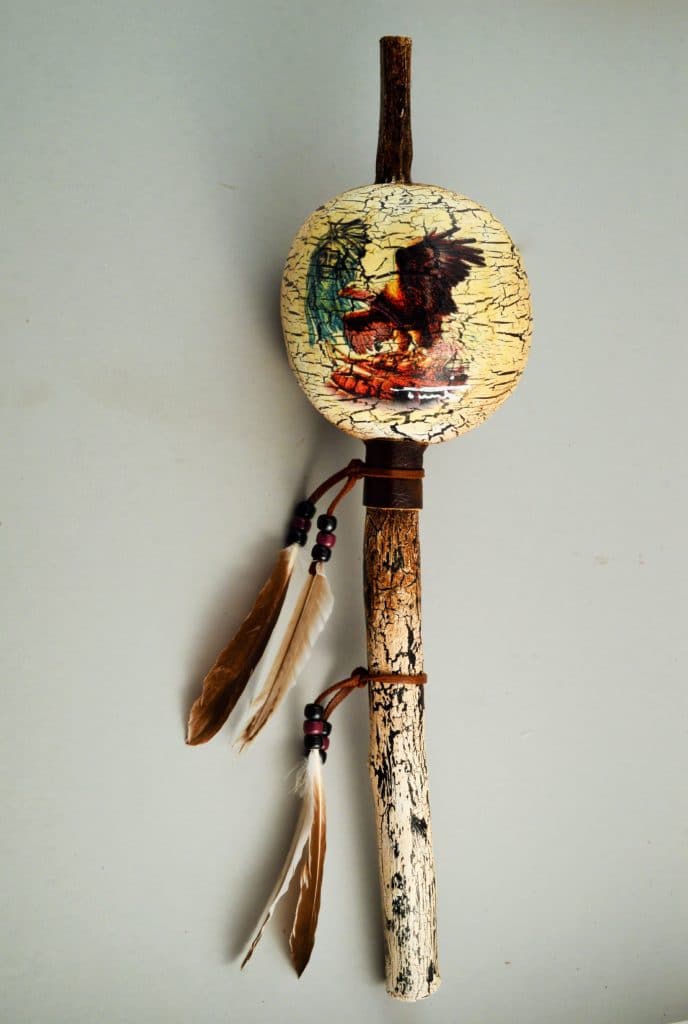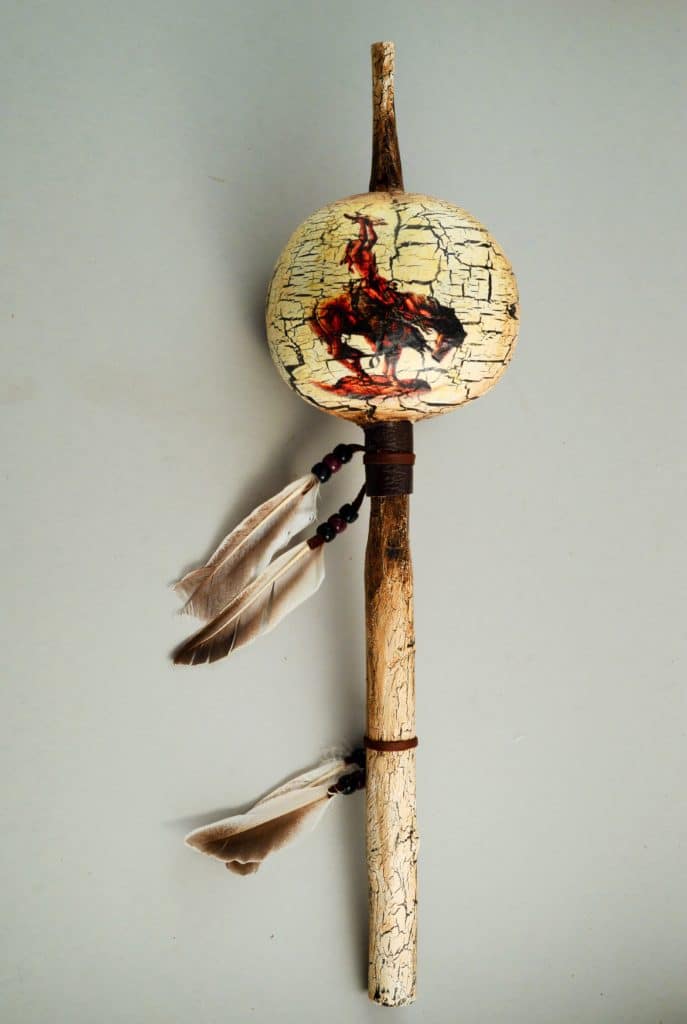In Native American culture rattles are used to honor the spirits. They can be made of any number of materials: wood, leather, turtle shells, horns, and gourds. To create the rattle sound, they are filled with seeds, stones, shells, dried beans, or even crystals.
The Ceremonial Gourd Rattle
The gourd rattle can be used in dances and rituals as musical instruments. They can also be used in ceremonies, with the animal kingdom represented by feather decoration, the mineral kingdom, represented by the stones inside the rattle, and by the plant kingdom represented by the gourd or the wood handle.
The significance of the rattle in ceremony represents a concentration of energy that creates different waves of vibration, depending on how the rattle is shaken. This helps raise a spiritual awareness in the user, to help heal ourselves through the transfer of energy.
The shaking of the rattle also helps in releasing the spirits to assist in the healing work or to assist in a sacred healing ceremony.
Shamans also work with rattles to bring out negative energies that may be troubling a person that could lead to an illness.
The Kachina Rattle
The Kachina is highly symbolic and is used, in part, as a teaching tool for children. It is also used by kachina dancers in ceremonies and produce a softer hissing sound, rather than the louder clanking sound of other rattles.
The Peyote Rattle
The peyote rattle became very important in the Native American church, which was a mixture of Native American and Christian beliefs, particularly during the all-night peyote ceremony.
The ceremonies have changed over the years, from the half-moon or crescent altar, to what is known as the cross-fire altar, popularized in the late 1800s.
The ceremony involves ingesting dried peyote, a hallucinogenic cactus that allowed visions to occur. It is believed that this helped focus one’s mind on the peyote without any distractions.
At Southwest Arts and Design, we have several gourd rattles for sale to retailers. These are made by our artisans in Mexico.

